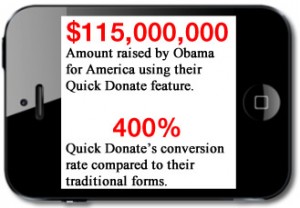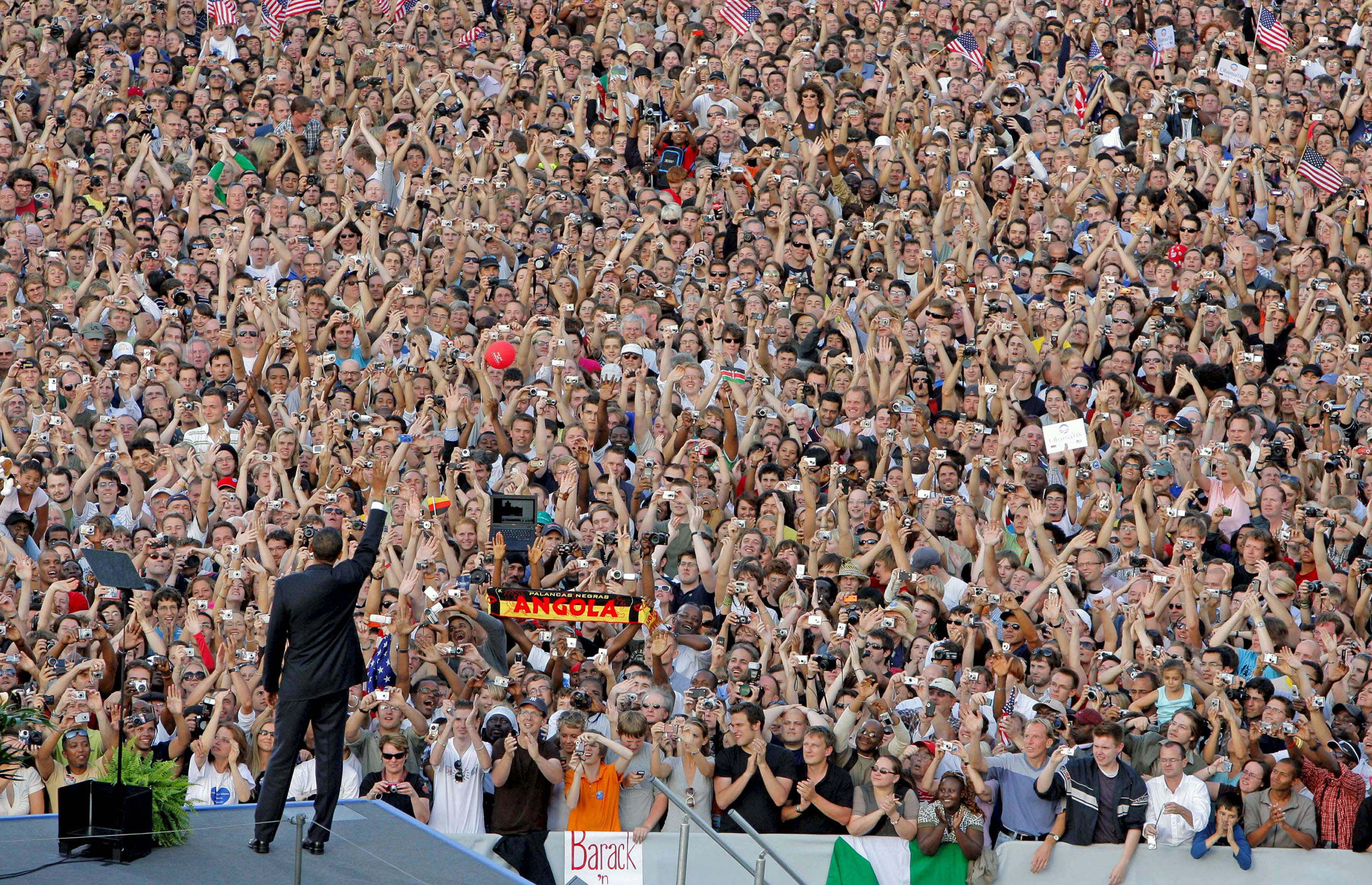What Obama (& Romney) can Teach You About Mobile (Part 2)
Please Note: This is the second of a three-part series analyzing the full spectrum of mobile tools used by both presidential campaigns.In Part 2, we will review how both campaigns leveraged mobile advertising and fundraising.
Mobile Advertising:
Spending on mobile phone advertising is exploding. Industry spent more than $1.8 billion on mobile ads in 2011. A year later that number grew to $5 billion worldwide.
Like their desktop brethren, mobile advertising provides exceptional targeting capabilities. In 2012, Google’s AdWords platform allowed campaigns to even target by congressional district. Most platforms offered geo-fencing – which limits ads to a set radius, and geo-targeting by zip codes. Both campaigns took notice.
Obama used mobile video ads in Spanish to target Latino voters. His campaign placed ads on mobile games such as Scrabble, Tetris and many others. And smart use of mobile advertising helped the campaign reverse their funk after the first debate. We also found that fundraising tied to mobile advertising campaigns generate 60% more donations than their desktop equivalents.
Romney’s mobile advertising habits began at the Iowa Caucus and New Hampshire primaries. His campaign spent more on mobile ads appeared on Facebook, Apple’s iAD platform and Google’s AdMob. And they effectively leveraged it to boost app downloads and recruit volunteers using click-to-call to connect them with the nearest campaign office. Their biggest mistake though was that they did not increase their mobile budgets to maintain their lead coming out of the first debate.
Mobile Fundraising:
Money drives campaigns, and 2012 proved to be the most expensive presidential campaign ever: both campaigns raise a combined total of $2 billion. Mobile had a significant impact both campaigns fundraising efforts.
Obama raises over billion dollars ($726M directly) of which 55% came from small donors – those who gave less than $200 during the election cycle. One in ten of their online donations came from mobile. The campaign experimented with using Square for smartphone credit card processing and Text2Give for impulse donations with little success.

Their Quick Donate feature proved to be one of their most effective tools. Past donors who saved their credit card information and provided a mobile phone number received simple donation requests via SMS. The donor would simply have to reply the number, such as 50, and in the system would process a $50 donation from them. This tool was timed to key events to maximize the effect.
The Romney campaign was less successful in this realm. While they released over 5,000 Square readers at the national convention, the program results whenever released – a sure sign of a campaign disappointment. While the campaign raised $992 million ($467 million directly), less than 24% came from small donors. When users clicked donate on the Romney mobile app, they were routed to mobile site instead of processing the donation within the app.
Takeaways:
Since mobile advertising is often directly tied to fundraising, both campaigns provided us with a few lessons:
- Do your best to remove all barriers: Obama was Quick Donate feature did not require filling out a lengthy form on a smartphone to donate, and drove impulse donations.
- Technology without strategy typically fails: Both campaigns used Square and Text2Give without a full understanding of how best they could be applied, and their efforts proved disappointing.
- Mobile is scalable: After the first debates, Obama ramped up his mobile efforts when they proved effective and he needed it most while Romney maintained spending levels regardless of whether he was ahead or behind.
In Part 3, we will review how both campaigns used mobile apps and messaging.
